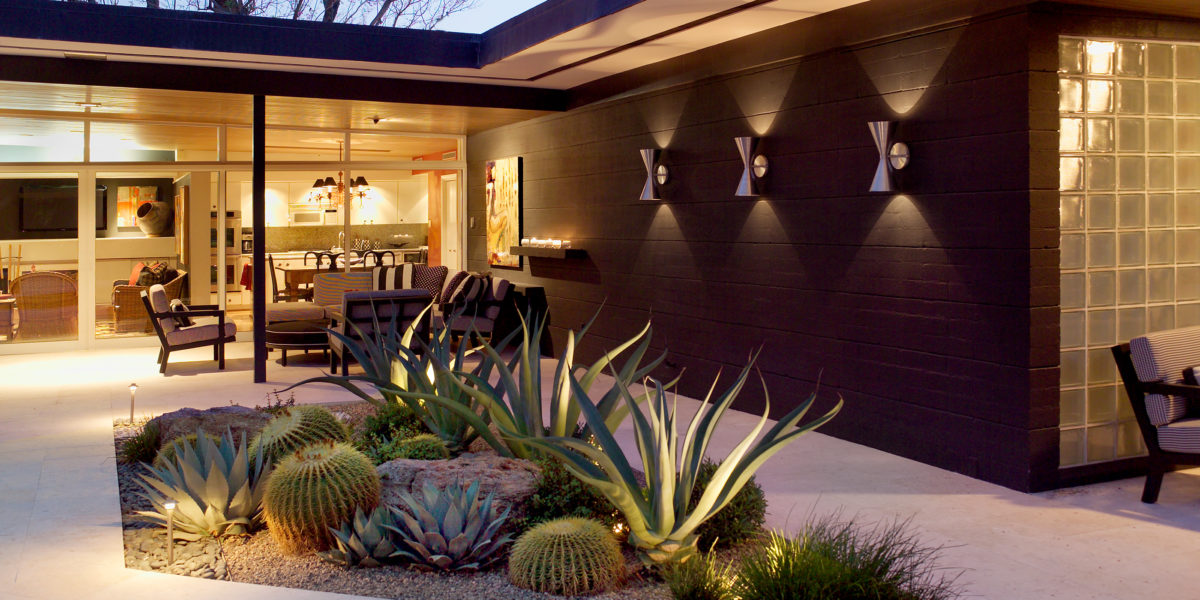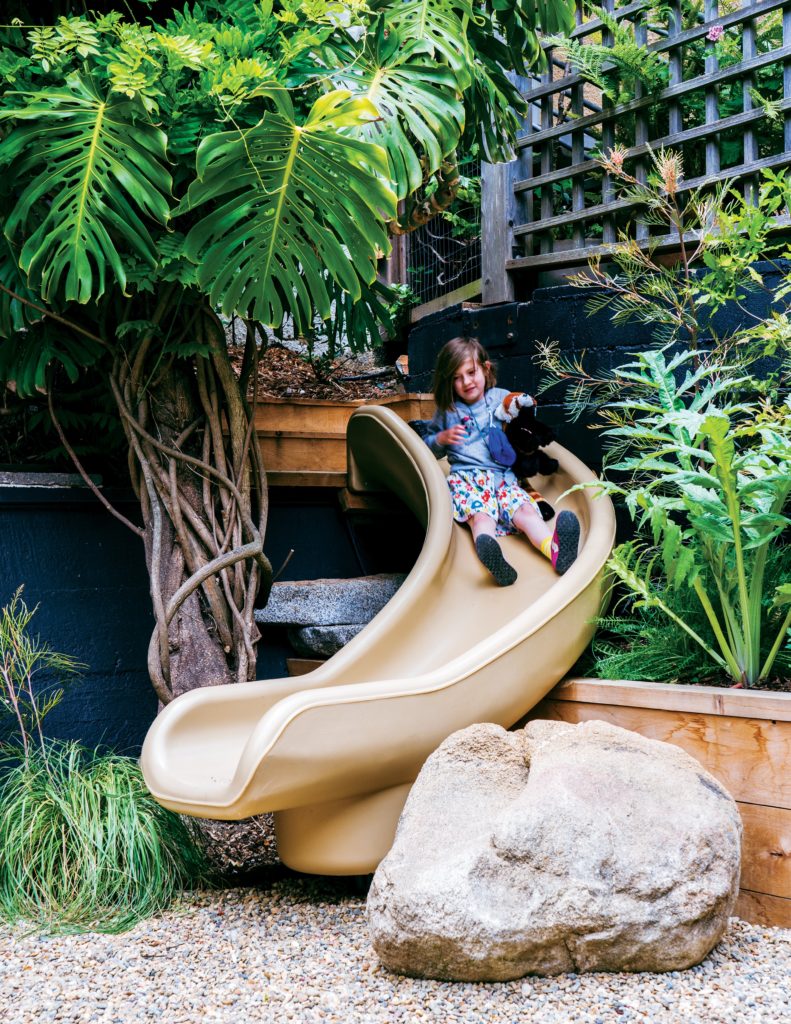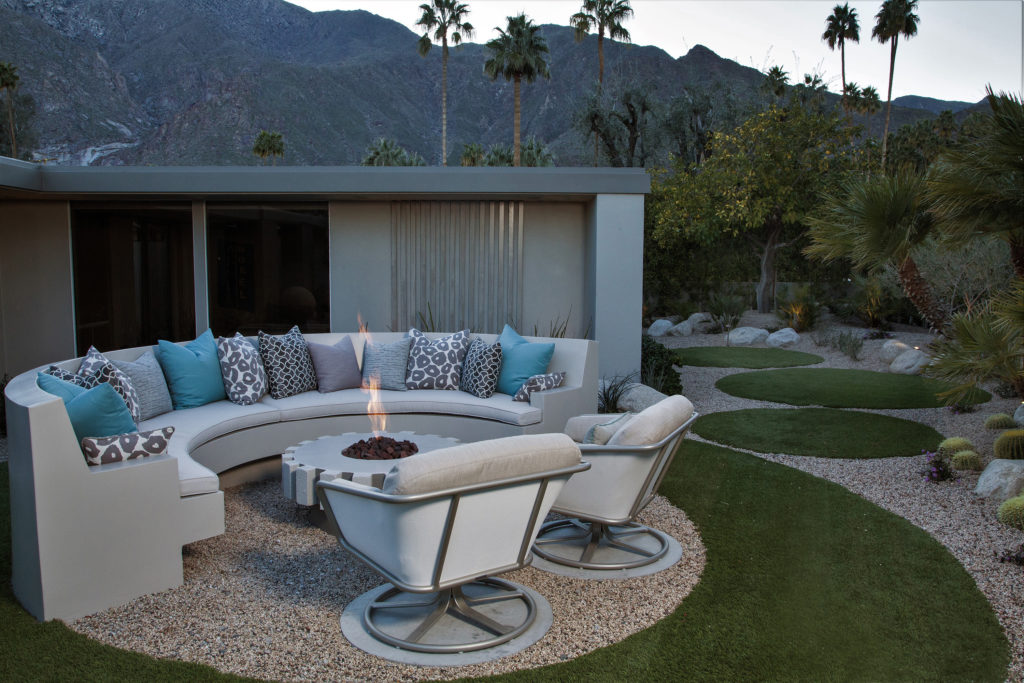
Ditch the Lawn. Design with Boulders
Boulders can lend gravitas to any garden, but before you head to the stone yard, you may want to read up on some important tips.

Do you know where landscaping boulders come from? I must admit, before writing this article I’d never given it much thought. Similarly, when Sunset’s editor-in-chief, Hugh Garvey, needed boulders for his front yard in Los Angeles, he didn’t know exactly where to buy them either.
That’s when landscape designer David Godshall of Terremoto took him to Sunburst Decorative Rock in Irwindale, California—and what he found there was a revelation. “It looks like a massive quarry—like a location in the movie Heat,” Garvey says. “An amazing, unexpected, urban landscape that you wouldn’t know is there.”
So began an education of what it would be like to pick out, as Garvey calls them, “organic LEGOs” from a stone yard.
What makes boulders so special? “A boulder, to me, is an exclamation point [in the garden],” says Molly Sedlacek of OR.CA landscape design. “It should be used sparingly, with caution, intention, and vibrato.”

Thomas J. Story
Ivette Soler, of Ivette Soler Gardens, agrees. “I think there’s something really special about boulders, especially in the Western states,” she says. “They’re such a part of a narrative here; they mean solid, they mean older, they give a landscape weight and heft.”
Boulders have a variety of uses. In Garvey’s front yard, the team improvised a path and used them as “little heat reservoirs” for plants while also keeping water in the ground and providing shade for new plantings on the down-sloping side. Smaller ones can be placed in a dry stack wall (as in, a wall without mortar), used as a threshold, or as stepping stones. Larger stones can take on the role of natural sculpture. A plank can be placed between two boulders to make a seat, or, as Sedlacek has done, one large boulder can be used as a chaise lounge.
Here, some basics to brush up on if you’re planning to get boulders for your garden.
Have a Plan
In geology, a rock larger than 10 inches in diameter is considered a boulder, while some designers consider 12 inches and up to be the standard. Regardless, weight is a huge factor when it comes to boulders. Going to a stone yard is not like going to Target where you can load everything in your cart and throw a few bags in your car, after all.
“Understanding how heavy a boulder can be is a key part of the education process,” Sedlacek says. In fact, she was once injured by one. “We were pulling a boulder down out of my van on a ramp and it was probably 500 lbs. The ramp slipped out, the boulder fell, and it pinned me by my leg. It took five people to roll it off me. It was very scary. For that, I love and respect rock even more—and we learned not to jerry-rig a ramp.”
That said, Soler says you can “be scrappy” if you don’t want to work with a landscape designer. “There are really beautiful mid-sized boulders about 2 feet high and 3 feet wide, and a stone yard will have a list of guys who are willing to move it,” she says. “So buying boulders is not out-of-range for the average homeowner. You have to be resourceful but it can be done.”
Color Matters
Do you want to create a natural look or highlight architectural features of your home? “If you’re creating a natural setting, you want to match the color of the boulder to the environs. That’s how you create connectivity between nature and the site that you’re on,” says Troy Bankord, of Troy Bankord Design in Palm Springs, California.

Troy Bankord
On the other hand, for a house in Palm Springs, Bankord used white boulders to pick up the color of a roofline. “It’s really about what vibe you’re trying to create,” he says.
Don’t Go Small
Several designers I spoke to said people tend to pick out boulders that are too small for their space. “People often think they need something less large when it’s out of context,” Bankord says.
Sedlacek adds: “For someone using boulders, I always say go a size up. People tend to see it in the quarry and think it’s big enough, but then you get to the job site and you wish that it was bigger.”
Going Underground
You want to bury your boulder by at least a few inches up to a third for it to look natural. “A lot of mistakes that homeowners or contractors make is they will set a boulder on top of the dirt and just have it floating, but in nature the soil has washed around it,” Bankord says, suggesting that people look at photos of Joshua Tree to see how deep to bury a boulder.
Soler prefers flat boulders because then they are more secure. “If you want one that goes upward, you may need a base of concrete and then you use gravel and plantings to hide that,” she says. “Safety is the most important thing, so I try not to do that.” Instead, she tries to have her boulders be as stable as possible.
Overall, boulders can make a huge personal statement in a yard. “Putting something as eternal as a big rock in your project is saying something like, ‘I’m here to stay,’” Soler says.
They also just might make you cool. When Garvey’s boulders were delivered, he found his profile in the neighborhood went up. “People were like, ‘if you have any extra boulders, we’ll take them,’” he says. “Everyone wants to be your friend when you have a big pile of boulders.”
